Ankita Gupta is pursuing masters in Electrical Engineering majoring in Power Systems and Power Electronics from Michigan Technological University. She graduated with B.E. in Electronics and Communications from NSIT, University of Delhi.

Biography[edit | edit source]
Ankita Gupta is pursuing masters in Electrical Engineering majoring in Power Systems and Power Electronics from Michigan Technological University. She graduated with B.E. in Electronics and Communications from NSIT, University of Delhi. She worked as an intern in Rice Lake Weighing Systems, Wisconsin, where she researched on transients effects in a power system and was involved in motor controller project using PWM and zero crossing detection. She also worked as an intern in Steel Authority of India Limited and BSNL. She designed a phasor measurement Unit Algorithm and implemented the algorithm in FPGA and Arduino boards. She also has worked on several projects including Power flow control of transmission line using facts devices, Usage based transmission loss allocation and Stability Analysis and Control of a Wind turbine driven induction generator, Effects of Shunt Reactor switching on transmission lines and applications and Arduino implementation of Linear Programming for smart grid building networks. She co- founded a startup named Flashpal.Co, where she was involved in System Administration and social media managing. She is experienced in working with MATLAB, PSPICE, C/C++, EAGLE CAD, LABVIEW, ASPEN, ATP, CYME, GAMS, SAP ERP, PHP, SQL, PLC, SCADA. Presently, she is pursuing her research interest in SolarPhotovoltaics, working under Dr. Joshua Pearce.
Research Interests[edit | edit source]
Currently, involved in research work related to incorporating Micro Grids and Solar Photovoltaics under Dr. Joshua Pearce. Also, working on Power System Protection which involves working with relays and trying to eliminate damage in Power System due to fault conditions.
Research Projects[edit | edit source]
Masters Research Projects[edit | edit source]
The following projects were done during my MS in Electrical Engineering at Michigan Technological University.
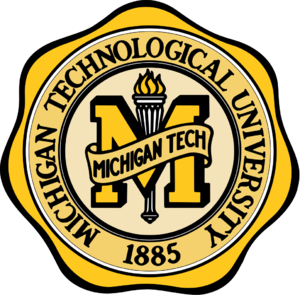
Study of Power Quality Issues all Over the World Using CHROMA 61502[edit | edit source]
This projected was done in RiceLake Weighing Systems, Wisconsin. Power Quality issues are faced all over the world. Implementation of tests like transients, harmonics, interharmonics, voltage spike, surge and swell, brownout conditions and Power Line Disturbances. All these tests were designed on CHROMA 61502 device. The drivers were written and connected. Settings of RS 232 communication port was also established. In house power supply testing techniques have been developed. A written manual for all the tests developed during this project was fabricated by me for the company's further use.
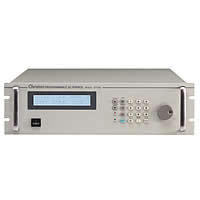
Aquaponics Project for Sustainable Development with Kohler Co.[edit | edit source]
- Becoming familiar with food needs for a family of four living in Chicago – think healthy food choices, growing children.
- Becoming familiar with what kinds of foods can be grown in an aquaponics system in Chicago – year round may be a little different. Determine tech support needs such as grow lights, temp control in winter months etc. also the size of the unit and how much food will be grown.
- Of the family food needs, determine which foods might be grown in the aquaponics system in their home in Chicago.
- Determining what is the likely (LCI) based footprint of these foods to create the baseline for comparison - Create model utilizing Ecoinvent data sets and SimaPro modeling software to represent the food footprint. Think about distances travelled, is the food refrigerated? Air shipped? etc. and chemicals used to preserve the food.
- Creating a second model of the above that substitutes growing food at home using an aquaponics system – consider all the impacts – from making the media, shipping to Chicago, infrastructure needs to set up the system.
- Analyzing the impact differences between these models and the drivers for these differences.

Implementation of Phasor Measurement Units Using Arduino and FPGA Boards with Opal RT Simulator[edit | edit source]
Designing a phasor measurement Unit Algorithm and using it for the application in Generator control. Implementation of this in FPGA and Arduino boards and also simulating and completing the closed loop using OPAL- RT. It is basically Wide area protection. Studying of Power System will be done in real time. Relaying is being used for the protection of the power system from any type of fault.
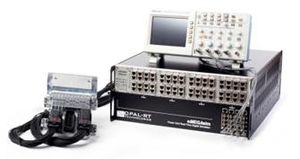
Arduino Implementation of Linear Programming for a Smart Grid Building Network[edit | edit source]
The main aim for the project was to develop a LP problem using Simplex Method for optimization of building to integrate them in smart grid distribution. The objective function was to optimize the power consumption of the building and in turn reduce the cost. A generic code was developed for ‘n’ variables and the program was implemented in Arduino UNO board. This was the hardware implementation of the LP program in power system optimization.
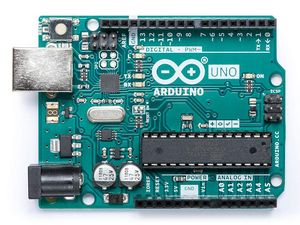
Effects of Shunt Reactor Switching on Equipment and Transmission Lines[edit | edit source]
Reactor banks play an important role in mitigation of the voltage rise, which is otherwise known as Ferranti Rise, which is distinctive to long lightly loaded transmission lines having high capacitive charging current. The energizing and de-energizing of the reactor bank introduces high frequency transients that might stress the insulation of the switching equipment leading to equipment failures. In this case study a comprehensive and a simplified EMTP model of the reactor are introduced. The computer model has been validated in field experiments.TThe simulation results obtained were reasonably acceptable and validate that reactor bank switching imposes heavy duty on circuit breaker and connected equipment during its energization.
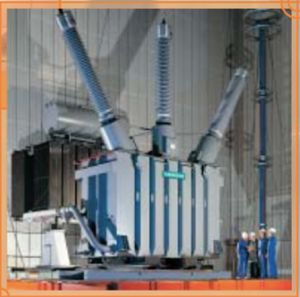
Stability Analysis and Control of a Wind Turbine-Driven Induction Generator[edit | edit source]
In this project, the aim was to analyse the transient and dynamic stability of a wind turbine system with Doubly Fed Induction Generator with conventional and fuzzy logic method. We have simulated our model in MATLAB SIMULINK. In this simulation we have considered a wind farm with 9MW capacity( 1.5 MW * 6). It is connected to an infinite bus system. Since, we have used a doubly fed Induction generator for our wind farm, all the required protection for the generator and the system have been considered. We have introduced a single line ground fault in the system and required reactive power compensation is also given. We have considered a two input and single output fuzzy logic controllers. We have two fuzzy logic controllers, one is for the capacitance control and the other one is for pitch angle control. The member functions for capacitor control are slip speed deviation and other is change of slip speed deviation and it is composed of 5 and 3 parts respectively. Similarly, for pitch angle control deviation in wind speed and rate of change of wind speed are member function inputs, each consisting of five parts. In both cases we have considered the range as -1 to 1 to calculate the graph of both the fuzzy logic controller.

Power Flow Control of Transmission Lines Using Facts Devices[edit | edit source]
A very important feature of an interconnected AC systems is that power flow control through specific control paths is quite difficult. This is because power flow in these paths depends upon the line parameters, topology of the network, generation and load location. The power flows are not directly dependent on transmission line ownership, contracts, thermal limits or losses. In this project we are trying to study the performance of a bus system with respect to active and reactive power and bus voltages. We are analyzing our bus system with and without a Unified Power Flow Controller and inspect the capability of the system. Here, in the first case we have considered a 5 bus test system and modeled it in SIMULINK MATLAB and studied the power flow in the system and noted the values of active and reactive power of the system and also the bus voltages. Then we have installed a block of UPFC in the system and then again repeated the process and then compared both the results and analysed the improvement in performance of the system. In the second case we have modeled a 9 bus test system and repeated the above steps and observed improvement in the behavior of the system. To overcome overload alleviation, contractual requirements and loss reduction, power flow control isrequired.So, we introduce flexible AC transmission systems (FACTS) devices which can control power flow in the transmission system as it can inject a sinusoidal voltage of variable and controllable amplitude and phase angle, in series with a transmission line. In our project we have simulated all our results using UPFC.
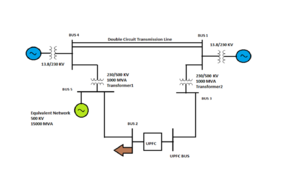
Usage based Transmission Loss Allocation[edit | edit source]
In recent times, transmission loss allocation is one of the major concern in deregulated power system. Transmission of power in a network is always associated with the losses. These losses are compensated by the generators in the network. In the large and complex power system network it accounts to billions of money. In a deregulated power system none of the generators wants to compensate these losses as it affects their performance and revenue adversely. So there arises a need to have a fair and accurate method of loss allocation. Due to the nonlinear nature of losses none of the existing methods are accurate and thus no universally accepted method exist for loss allocation. In this project a new technique of transmission loss allocation known as "Usage based transmission loss allocation" is studied and implemented. This method is implemented on IEEE 14 bus system in MATLAB. Here load flow is run for the system using Newton Raphson method and the results obtained like voltage values, power output, branch flow etc. are used for further calculation of total losses. Usage coefficient are found for generating and non-generating buses which is then used along with the exact loss formula to allocate losses to load and generators simultaneously. The key point of this method is that it has least approximation and thus losses are assigned fairly and accurately. This method is one of the best approach for solving the challenging problem of transmission loss allocation in power system. This is just a stepping stone in the area of loss allocation and has a very large scope of expansion. This program can be generalized for ’n’ bus system and can became a standard approach for allocating losses in a power system. Inclusion of slack bus and congestion can make this program more standardized.
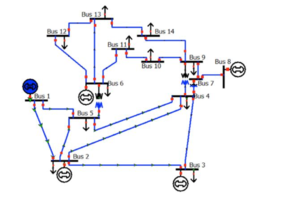
Projects during Undergraduate[edit | edit source]
Following are the projects which were done during undergraduate studies. It mainly involves Electronics, Networking and Communications.

Performance Analysis of High Data Rate Cooperative Communication System[edit | edit source]
- Outage Analysis of Full Duplex Relaying with 2 DF Relays
Here, the performance analysis of the system is done using gamma- gamma function as pdf (probability density function) and the closed expression for the outage probability of the system is obtained. The simulations and results of the expression are obtained by implementing the theoretical results on the MATLAB software.
- Outage analysis of free space optical coded cooperation in weak atmospheric turbulence
The research for this topic followed analysis of the performance of coded cooperative communication systems over weak turbulence regime and derive the closed form of expression of outage probability for a two user based model considering path loss and pointing error during communication using log normal function as pdf. The simulations and results of the theoretical expression is obtained by implementing on MATLAB.
Car Parking Using 8085 Microprocessor[edit | edit source]
A device to keep the count of total number of cars present in a parking lot. A LED display is used and 8085 microprocessor was used with RAM and ROM devices. A printed circuit board was used where all the devices were soldered. Two infrared sensors were there to detect the incoming and exit of the cars in the parking lot. Also a 12V power supply was used to run the model.
Data Communication and Transmission Control Protocols[edit | edit source]
Elaborate work on Transmission control protocols and IEEE 802.6 performed. It involved working on LAN-T Trainer and the throughput of 6 systems in TCP Model were calculated manually and using experimental set up and both results were compared and error in both was calculated.
Cognitive Radio[edit | edit source]
It involved study of working procedure of Cognitive Radio and as a goal towards which a software defined radio platform should evolve. Also, study of dynamic spectrum management and the applications of Cognitive Radio which involves detecting any spectrum use and temporarily use it without interfering with transmission of other uses.
Publications[edit | edit source]
- Outage analysis of free space optical coded cooperation in weak atmospheric turbulence
2nd International Conference on Signal Processing and Integrated Networks (SPIN) IEEE XPLORE
The research for this topic followed analysis of the performance of coded cooperative communication systems over weak turbulence regime and derive the closed form of expression of outage probability for a two user based model considering path loss and pointing error during communication using log normal function as pdf. The simulations and results of the theoretical expression is obtained by implementing on MATLAB. IEEE
- Coded Cooperation over Wireless Optical Links in Weak Atmospheric Turbulence with Misalignment Fading
Communication (NCC), IEEE and Research Gate
The outage behaviour of a free-space optical (FSO) cooperative communication system with coded cooperation diversity is analyzed. The coded cooperation, through the transmission of incremental redundancy, provides the combined gain of cooperative signalling and channel coding. In this paper, we consider a two user based system model, where each user transmits its data as well as acts as the cooperative partner for the other user. The FSO links in weak atmospheric turbulence regime are modelled with log normal fading distribution. The outage analysis of the coded cooperative diversity is performed in presence of zero-boresight misalignment errors in the receiver planes. Specifically, the new closed form expression for outage probability is derived for each user. Moreover, the effect of distance dependent path loss factor is also considered in the analysis. IEEE